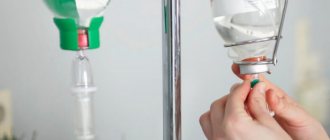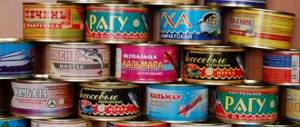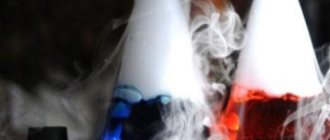Poisoning by poisonous plants is intoxication caused by substances contained in any plants - trees, bushes, herbs and flowers. Like any other, this poisoning can be either acute or chronic.
Depending on the type of poison, the symptoms will be different: with primary damage to the gastrointestinal tract, cardiovascular, nervous system and much more.
Symptoms of poisoning
The first signs of poisoning are nonspecific. They occur when a toxin enters the stomach and irritates the digestive organs. Vomiting, abdominal pain, and loose stools appear. After the poisons are absorbed into the blood, more specific symptoms develop. Affected:
- nervous system (atropine-like and nicotine-like syndromes);
- heart (heart rhythm disturbances);
- digestive organs and liver (hemorrhages on the skin, jaundice);
- skin (toxic dermatitis).
Atropine-like syndrome is caused by the poisons of henbane, crow's eye, datura, nightshade, and belladonna. It is manifested by the following violations:
- dryness in the mouth and throat;
- cardiopalmus;
- dilated pupils;
- temperature increase;
- agitation, hallucinations, loss of consciousness;
- redness of the skin.
Nicotine-like syndrome develops when toxins of aconite, hemlock, some types of wormwood, tobacco and thermopsis enter the bloodstream. Its symptoms:
- dizziness and headache;
- excessive salivation;
- increased heart rate, shortness of breath and increased blood pressure, followed by decreased blood pressure and slower breathing;
- muscle twitching or cramps;
- constriction of the pupils;
- sometimes hallucinations and coma;
- when using tobacco internally – nausea, vomiting, diarrhea.
Hallucinations are most typical for poisoning with poppy or cannabis. At the same time, excitement and tinnitus appear. In severe cases, weakness, prolonged sleep, slow heartbeat and decreased blood pressure develop. In case of poppy poisoning, breathing may slow down and stop.
When poisoning with almonds and the kernels contained in the seeds of some fruits, a disruption of tissue respiration occurs. This is accompanied by the following manifestations:
- intense headache, vomiting, abdominal pain;
- weakness;
- severe drooling;
- palpitations and pain in the heart area.
Then the victim experiences severe shortness of breath, convulsions, and a slow pulse. There is a loss of consciousness and dilation of the pupils.
Adonis, lily of the valley, foxglove, oleander, lure, sophora, and hellebore have a toxic effect on the heart. The victim complains of a rapid, often irregular heartbeat. Blood pressure decreases, convulsions occur, and breathing problems may appear. In severe cases, the person loses consciousness.
Dermatitis is caused by contact with the skin of the juice of poisonous plants - hogweed, acacia, celandine, milkweed, buttercup and many others. It is accompanied by burning, itching and redness of the skin. This disease has a benign course.
Gastroenteritis can be caused by castor bean, buttercup, spurge, celandine and nightshade if ingested. The victim experiences nausea and vomiting, abdominal pain and diarrhea. Dehydration and dry mucous membranes develop. In severe cases, blood appears in the stool.
Many plants cause a variety of lesions, but the predominant syndrome occurs before other manifestations. When consuming large amounts of poison, most victims develop coma, respiratory depression, and heart rhythm disturbances.
Henbane black
Some poisonous plants synthesize biologically active compounds - alkaloids. They are used as medicines in strictly defined doses. Such a plant is henbane, which has been used to treat patients since ancient times. But in large doses, henbane can cause poisoning.
Henbane is a herbaceous plant of the nightshade family, 30-60 cm high. The stem is straight, pubescent with soft glandular hairs. The leaves are alternate, elongated-opal, notched-toothed. The basal leaves are petiolate. The flowers are collected on the tops of the stems, are large and have a dirty yellow corolla with dark purple veins. The fruit is a capsule with small brownish-gray seeds.
https://www.youtube.com/watch?v=Y8EcH803DyM
Henbane grows in weedy places, in vegetable gardens, orchards, and roadsides. Wild plants are not harvested for medicinal purposes. All parts of the plant contain poisonous alkaloids of the atropine group. The seeds also contain a bitter glycoside, resins, and fatty oils. It is the seeds, which taste good and resemble poppy seeds, that most often cause poisoning.
The first signs of poisoning are dilated pupils, dizziness, redness of the face, excessive agitation, accompanied by delirium and hallucinations.
First aid
If the juice of a poisonous plant gets on the skin, wash it with soap and water and lubricate it with any nourishing cream. In more severe cases, a sterile bandage with hydrocortisone ointment is applied. Cold compresses on the affected area help.
In case of any poisoning caused by the entry of a toxic substance into the stomach, lavage is necessary. At home, before the doctor arrives, it can be done by giving the victim 4-5 glasses of water, and then inducing vomiting by pressing on the root of the tongue. This procedure is carried out 3-4 times, using ordinary water, possibly from the tap. Such washing is prohibited during convulsions and loss of consciousness.
After washing, the victim is given activated charcoal. Its dose for poisoning is quite large. It is better to crush the tablets into powder. 3-5 tablespoons of this powder should be mixed in 2 glasses of water and given to a person to drink, constantly shaking the mixture. Subsequently, in a medical institution, the administration of charcoal is often repeated, and the total dose for poisoning can reach 1 kg.
Wolf's Bast
A strongly branched shrub from the berry family. Its branches are twig-like, with gray bark covered with small brown spots. The leaves are alternate, oblong-lanceolate, collected at the ends of the branches. The leaves are bluish-green above, bluish below. The flowers are four-petalled, pink or white, fragrant, sitting on the sides of the branches in the axils of the leaves. The fruit is a juicy berry, bright red, sometimes yellow; grow directly on the stem.
All parts of the plant are poisonous. They contain a toxic substance - daphnin. The bark and sap of the plant, as well as the berries, which are attractive with their bright colors, are especially poisonous. It is even dangerous to touch the plant; under no circumstances should you touch it with your hands, since contact with the plant on human skin causes irritation, inflammation, blisters and long-term non-healing ulcers.
Poisonous house plants
The poison of many indoor plants is not fatal, but often causes severe illness. Such poisonous plants include specimens from the Araliaceae family:
The fruits of these plants cause allergic reactions or upset the digestive system. Ivy also belongs to the Araliaceae family, in which not only the fruits, but also all organs are poisonous.
Begonia contains insoluble salts of oxalic acid, which cause burns, oral irritation, difficulty swallowing, and vomiting. The most toxic parts of this plant are the tubers .
Gloriosa bulbs contain toxic substances that, in large doses, cause blood clotting disorders and kidney disease. Symptoms of gloriosa poisoning are vomiting, nausea, diarrhea. Eating unripe lantana berries will lead to vomiting, diarrhea, weakness, and difficulty breathing. The berries contain substances that are toxic to humans - triterpenoids, which in some cases can even cause liver failure.
Plants of the euphorbia family - akalifa, euphorbia, croton, poincessia (the most beautiful euphorbia), jatropha - contain the toxic substance euphorbine . It causes burns to mucous membranes and skin. When working with euphorbias, you need to take special care and protect your eyes: the milky juice, irritating the cornea, can lead to loss of vision (temporary or complete). If it gets into the mouth, the milky juice burns severely and causes digestive and nervous system upset.
Representatives of the nightshade family are also quite poisonous:
- nightshade (aka solanum, Jerusalem cherry);
- brunfelsia;
- Browallia;
- decorative pepper.
Nightshade and pepper have beautiful ornamental fruits that may make children want to try them. Brunfelsia contains the toxic substance brunfelsamidine, which causes severe salivation, stomach upset, lethargy, trembling, coughing, and seizures. Contact of the milky juice of ficus with the skin leads to inflammation, eczema and dermatitis. Ficus sap released into the air causes allergies or bronchial asthma.
Treatment methods
Therapy is prescribed by a doctor; only he is able to decide on hospitalization or sending the patient home with medical recommendations. After a general examination, collecting a history of poisoning and life, the doctor prescribes medications. In most cases, the following groups of drugs are used:
- sorbents;
- tannins;
- potassium permanganate;
- glycerol;
- saline solutions.
Taken together, the proposed medications quickly and efficiently rid the body of toxic substances, stabilize the functioning of organs, reduce and, in the future, completely eliminate symptoms.
Analgesics and antispasmodics are also used to relieve pain. Treatment includes following a diet that excludes fried, fatty, smoked, spicy and canned foods. All dishes are served crushed and pureed in order to better digest and reduce irritation of the damaged mucous membrane.
Low toxic plants
Eating low-toxic plants is not life-threatening, but leads to a number of unpleasant consequences: digestive system upset, diarrhea, weakness, vomiting, trembling. Low-toxic plants include representatives of the amaryllis family, which contain lycorine or other toxic alkaloids: amaryllis, hymenocallis, hemanthus, hippeastrum, zephyranthes, crinum, clivia, nerine, eucharis. Many other plants are also low-toxic: aloe, geranium, gardenia, dracaena, Kalanchoe calamondin, cordilina, strelitzia, yucca. However, there are many beautiful house plants that do not pose any health hazard: orchids, gloxinias and other representatives of the Gesneriaceae family, Usambara violets, hibiscus, various types of succulents. The listed plants can be safely used to create a home collection.
Possible consequences
With timely diagnosis and adequate therapy, the prognosis is favorable. If the victim is not provided with first aid in a short time, the following complications develop:
- acute toxic hepatitis;
- pancreatitis;
- liver, kidney failure;
- hypovolemic shock;
- heart failure;
- asphyxia;
- persistent mental disorders;
- gastritis.
The worst outcome is considered to be death, which can occur in a very short time.
Dangerous street plants
The plants listed below are unpretentious, and therefore are found more often than others. After interacting with any of them, a person will urgently need first aid.
- Aconite . Causes convulsions, dizziness, loss of consciousness;
- Belladonna . Causes nausea, dizziness, hallucinations, convulsions and even death.
- Datura common. Causes the same reactions as belladonna.
- Crow's eye . Leads to speech disorder, convulsions, and depression of cardiac activity.
- Field bindweed. After poisoning, nausea and abdominal pain appear.
- Larkspur field . Signs of poisoning include difficulty breathing and a drop in blood pressure, convulsions, and cardiac dysfunction.
- Foxglove . After taking it, stomach upset occurs, swelling and extraordinary contractions of the heart muscles appear.
- Male fern . Signs of poisoning are indigestion, convulsions, blurred vision, depression of cardiac activity.
- Dream-grass. Affects the gastrointestinal tract, disrupts kidney function, causes convulsions and breathing problems.
- Spore. Leads to severe pain, seizures and even death.
- Hemlock . Causes dizziness, convulsions, thirst, paralysis of the respiratory center.
- Lobel's hellebore. Symptoms of poisoning include upset stomach, slow breathing and pulse, and blurred vision.
- Great celandine. Causes paralysis of sensory and nerve endings.
First aid for plant poisoning is to rid the victim’s body of the poison. The sooner this happens, the less serious the consequences will be.
Crow's eye
A perennial herbaceous plant from the lily family. The stem is erect, 20-30 cm high and has four obovate leaves arranged crosswise. The rhizome is creeping, long, thin. A greenish-yellow flower grows at the top of the stem. Blooms in May-June. From the flower in July-August a fruit is formed - a large black-blue berry.
The whole plant is very poisonous, especially the spherical berries contain a lot of poison. Poisoning with berries causes nausea, vomiting, and abdominal pain.
Symptoms of plant poisoning
First aid to an injured person is the same in all cases - ridding the body of poison. However, the effect of poisonous plants on the body causes different reactions depending on which organs they affect:
- Nervous system. Symptoms of poisoning are convulsions, agitation, dilated pupils, nervous itching, manic disorder.
- Gastrointestinal tract. Symptoms are vomiting, diarrhea, which is explained by the body’s attempts to remove harmful substances.
- Heart. When poisoned by poisonous plants that affect the heart, cardiac dysfunction occurs: alternating strong heartbeat with freezing, a sharp drop in blood pressure.
- Liver. Ingestion of poisonous plants leads to loss of appetite and indigestion, nausea, and pain in the right hypochondrium.
- Leather. Burns and dermatitis occur when skin is exposed to certain plants, and some essential oils can be harmful to the skin or mucous membranes.
The appearance of any of these signs is a sign that the victim urgently needs first, and subsequently, medical care.
General symptoms of intoxication
The signs are different, they should be considered in detail and individually. All details are described below in the table.
| System | Manifestations |
| Nervous | Pupil dilation |
| Convulsive syndrome | |
| Paresis or paralysis of skeletal muscles | |
| Dizziness | |
| Decreased visual acuity | |
| Rave | |
| Hallucinations | |
| Cardiovascular | Arrhythmia |
| Bradycardia | |
| Changes in blood pressure readings | |
| Chest pain | |
| Digestive | Salivation |
| Vomit | |
| Decreased appetite | |
| Diarrhea | |
| Nausea | |
| Intestinal colic | |
| Respiratory | Pulmonary rhythm disturbance |
| Shortness of breath, ventilation failure |
In severe cases of the disease, depression of consciousness occurs, up to coma, and liver and kidney failure cannot be ruled out.











